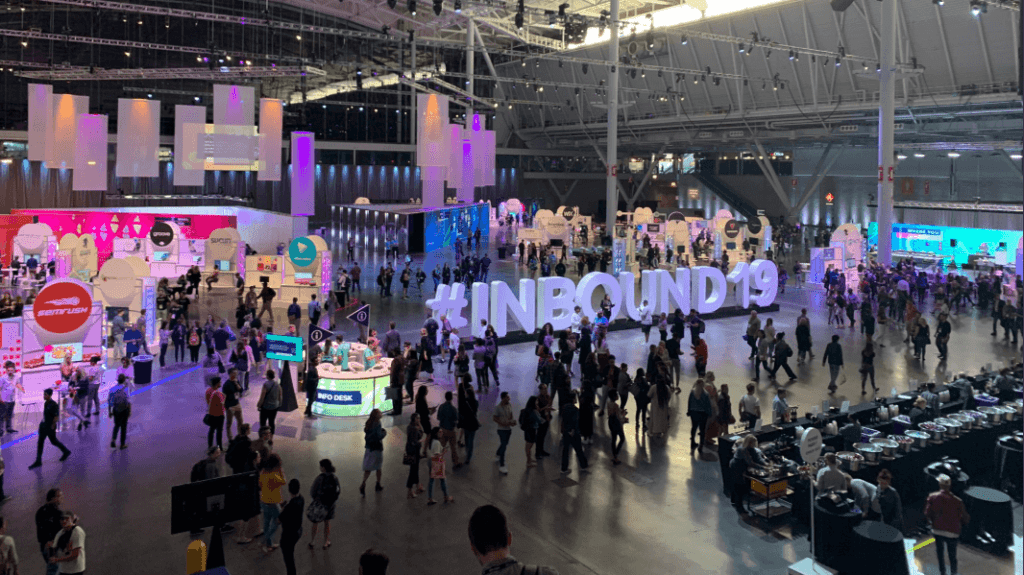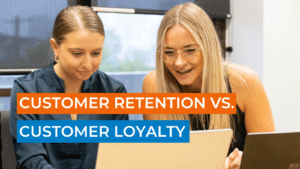INBOUND brings together marketers, salespeople and business professionals from around the world for a week of inspiring talks and unmissable content. As the winner of Reload’s Lead Generation Award, I was excited (and admittedly a little nervous) to be flown to Boston to see speakers like Jennifer Garner, Katie Couric and Alexis Ohanian in the flesh amongst more than 26,000 attendees. At the end of a jam-packed three days, I can honestly say that INBOUND was one of the most enriching and exciting experiences of my career in digital marketing. Here are some of my key takeaways.
The Customer Journey is no longer linear
“We’re building a playground, not a narrow path”
Customer journey mapping is the foundation of any brand marketing strategy, and with the ongoing evolution of the digital world, the way a customer interacts with a brand is constantly changing. Once referred to as linear, the majority of customer journey maps would conceptualisation that people go through a straightforward awareness, consideration, purchase/enquiry path. Add in loyalty and advocacy, and the journey then became a ‘loop’ with customers in a constant cycle of interaction with a brand. But do all customers really enter their journey at the very top of the funnel and follow that exact same path?
Ashley Faus, a senior manager at Atlassian, thinks not. She compares the customer journey to a playground, and customers to her 3-year-old nephew. This new model allows people to come into the journey any way they can, meaning brands need to provide value no matter where someone lands, and give them the ability to take their own path. Much like a child on a playground who can start at the slide, the seesaw or the monkey bars.
The customer journey is no longer linear, or a loop. The customer journey is now a playground. Interesting thoughts by @ashleyfaus 💡 #INBOUND19 pic.twitter.com/KU2Vm5PZgH
— Alexandra Duncan (@lexdunc) September 4, 2019
Content needs to cater to the new ‘playground’ journey
Content was a big talking point over the three days, with I’d say at least 50% of sessions covering the topic. During her session, Ashley Faus spoke about the importance of building content for each stage of this new ‘playground’ journey so that customers have something to engage with even if they enter the ‘wrong way’.
Let’s look at the three levels of content depth that can help with this:
- Conceptual – these are theoretical and philosophical in nature. They focus on the ‘what’ and the ‘why’ of the idea.
- Strategic – Focusing on the process, tools and key knowledge components that must be included to make the conceptual ideas a reality.
- Tactical – Prescriptive, step-by-step instructions, and specific exercises to help the audience implement the conceptual and strategic ideas.
Once you’ve planned out the above, the next step is to decide how this content will be distributed. Ashley broke this down into a three-step distribution framework according to asset type (how the content will look and what format), channel/platform (how this content will be distributed) and metrics (analysing the performance).
“The goal is to provide value no matter where someone lands and allow them to continue the journey wherever they go. Content creation, amplification and reporting shouldn’t be treated as a narrow path” – @ashleyfaus at #INBOUND19 pic.twitter.com/VOvGA9MvFJ
— Alexandra Duncan (@lexdunc) September 4, 2019
Don’t just create content, create experiences
Creating a good experience for customers is one of the most important things brands can do. Eighty-two per cent of customers have left a business because of a bad customer experience. Dan Gingass (who I now like to call the ‘Greatest Showman Impressionist’) described it well: “The bar for customer experience is almost at the floor, you don’t need to high jump. All you have to do is step over it.” Sounds easy, right? But as consumers, we’re more inclined to share our bad experiences, and with social media this is increasing. Thirty per cent of consumers said they would post a negative review online or on social media after a bad experience.
“The bar of customer service is nearly on the floor, you don’t have to high jump. Just step over.” @dgingiss, Greatest Showman impressionist. #INBOUND19 pic.twitter.com/gMkC3n71Vc
— Alexandra Duncan (@lexdunc) September 6, 2019
So, what can brands do to prevent this? Dan says using his WISER approach will help:
Witty – not to be confused with ‘funny’, a brand needs to be clever and look at the words they are choosing.
Immersive – getting people to feel like they’re a part of your brand and really connect with them.
Sharable – the content you create needs to be good enough for a customer to want to share with their friends, whether through social media or word of mouth
Extraordinary – make your customers’ experiences simple and look for the parts of your customer journey that are hard.
Responsive – it is a brand’s responsibility to respond to what their customers are saying to them (via reviews, social media etc.). Failure to respond via social media can lead to a 15% increase in churn.
Customer Experience with the rise of AI
“As marketers, our Game of Thrones is the game of customer experience. It is win, or die.”
Customer experience is often something a lot of companies fail to do well. Did you know that 54% of consumers have stopped doing business with a brand due to poor customer experience? The winning companies are the ones you’d expect. The ones who have competed with traditional business models and removed the friction for their customers – the Ubers of this world.
But how is CX done well?
Audience
The biggest mistake most companies make is that they go after the average consumer. But we’re not all the same! Use segmentation, personalisation and relevance to target the different types of customers you have. Some key questions to ask are:
- Who are your customers?
- How do you appeal to them?
- What does good CX look like to them?
- What do we need to do, or do differently, in order to meet that?
Behaviour and convergence
As marketers, we always need to be planning for upcoming trends and technologies. AI is a great example of this. As people are becoming increasingly comfortable using assistants like Amazon Alexa and Siri, we need to pivot our strategies and optimise towards this. But how?
Purna Virji, Senior Manager of Global Engagement at Microsoft, broke this down into 3 key query types:
- Information – Optimise for featured snippets, use schema markup, provide FAQs, and answer common questions in your content.
- Navigational – Have reviews, profiles on business directories, and location optimised content.
- Transactional – Have product schema mark-up, optimise your product pages, answer FAQs with natural language, and include customer reviews
Design for all
Finally (and potentially one of the most important takeaways that Purna shared) no matter how amazing an experience is, if it’s not made for everybody, it’s not right. Accessibility should be used as a differentiator, and if it’s designed for one, it can be usable for many.
For example, if you design your product for users with one arm, you’re not only designing for these people. You’re also doing it for the millions of people who break their arm each year, or the parents holding their child in one arm.
Great talk by @purnavirji to end the first full day of #INBOUND19.
“No matter how amazing an experience is, if it’s not made for everybody, it’s not right.” pic.twitter.com/MblLyCiK8y
— Alexandra Duncan (@lexdunc) September 4, 2019
Email is having its moment
Going back 19 years, people thought email was dead. Fast forward to 2019, and….
- 72% of people prefer to receive content by email
- There are 3.7 billion active email users around the world
- People spend 5.4 hours/day in their emails (work and personal)
Email is everywhere, and businesses need to make sure it’s part of their marketing strategy – for both customer retention and acquisition. It offers a way of building strong customer relationships by allowing us to reach customers in a highly engaged environment, with the ability to push relevant content whilst driving return and sustaining loyalty.
So how can businesses step up their email game?
- Understand your audience.
- Use AI to help with the heavy lifting.
- Audience segmentation and personalisation can help improve effectiveness throughout the customer journey.
Why is email so important to businesses?
1. Way of building customer relationships
2. Critical channel to have consistent touchpoints
3. Customer retentionThank you @kerel_cooper 👏🏼 #INBOUND19 pic.twitter.com/gWbNp0XB50
— Alexandra Duncan (@lexdunc) September 6, 2019
These are just some of the many learnings I took away from INBOUND 2019 and I can’t wait to share them with my clients and fellow Reloaders back in Australia. If you’d like to chat further about any of the above topics, contact Reload to connect with myself or one of our 70+ digital marketing experts.
And #INBOUND19 is done! Massive thanks to @Reload_Media for giving me the opportunity to come all the way to Boston and be involved in such a fun and amazing week! Smashed it out of the park @INBOUND ⚾️👏🏼 pic.twitter.com/p6c6WEUNzh
— Alexandra Duncan (@lexdunc) September 6, 2019





















